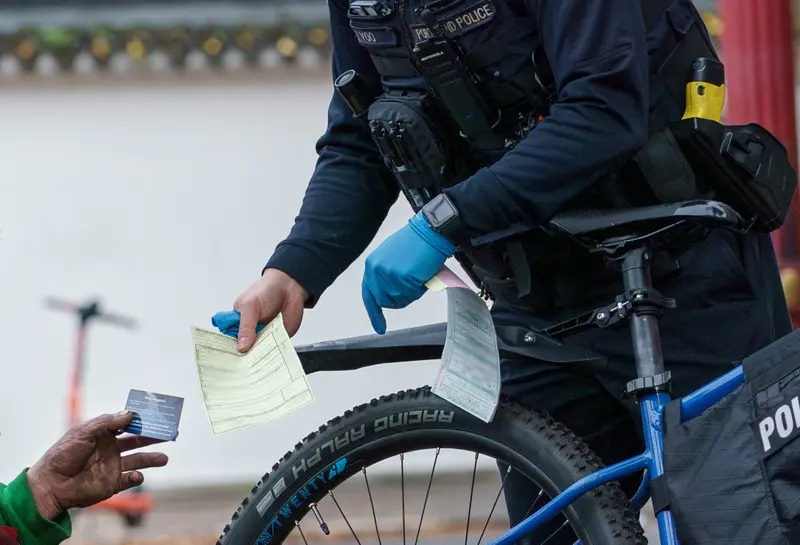This article was produced for ProPublica’s Local Reporting Network in partnership with Oregon Public Broadcasting. Sign up for Dispatches to get stories like this one as soon as they are published.
It's a scene police say plays out all too frequently in downtown Portland.
An officer hands someone a $100 ticket for possessing the deadly narcotic fentanyl and a card with a treatment hotline number. Call this number, the officer says, and the ticket goes away. The person caught with fentanyl never calls. The ticket goes unpaid.
“We’ve talked to exactly two people that have actually called that number," said Sgt. Jerry Cioeta of the Portland Police Bureau. He said last year his bike squad handed out more than 700 tickets “and got absolutely nowhere with it.”
This is the day-to-day reality of Oregon’s unusual experiment in decriminalizing possession of small amounts of drugs such as cocaine, methamphetamine, heroin and fentanyl.
Ballot Measure 110, approved by voters in 2020, created a new role for law enforcement in Oregon. While there’s evidence people living with addiction in the state are increasingly finding their way into treatment, the failure to turn police encounters into successful on-ramps to rehab has been cited by critics as prime evidence the measure isn’t working. Oregon lawmakers, noting an ongoing rise in overdose deaths, are now looking to restore jail time for drug possession.
But Oregon’s political leaders themselves played central roles in failing to deliver on the potential for law enforcement to connect people with lifesaving services under the new measure, documents and interviews with a wide array of people involved in the system indicate.
The Legislature, the court system and the bureaucracy under two governors ignored or rejected proposed solutions as seemingly straightforward as designing a specialized ticket to highlight treatment information. They declined to fund a proposed $50,000 online course that would have instructed cops how to better use the new law. They took no action on recommendations to get police, whose leaders campaigned against the ballot measure, talking with treatment providers after decriminalization passed.
Leaders involved in the process pointed to the rapid timeline for implementing the measure amid the pandemic, among other developments, as a factor hindering what they could accomplish.
Both a leading critic of Measure 110 and its most prominent supporter agree that leadership failures took away any chance for Oregon to truly test the measure’s potential.
Tera Hurst, of Oregon’s Health Justice Recovery Alliance, a nonprofit that represents many of the addiction service providers the measure now funds, said law enforcement and providers needed to be brought together to talk in order to translate its vision into reality.
“The people who are literally on the ground were not really engaged in the beginning to say, ‘How do we make this work?’” Hurst said.
Mike Marshall, director of the rehab and prevention advocacy nonprofit Oregon Recovers, said he considered the threat of jail an important motivator and didn’t want voters to pass Measure 110. But once they did, he was dismayed that state officials didn’t step forward to fulfill the measure’s goals.
“They didn't see that the voters gave them this really imperfect tool but were committed to reducing substance use disorder rates and increased access to treatment,” Marshall said.
“Instead,” he said, “they simply tried to do the least amount of work to administer it to the letter of the law.”
Voters made the broad intent of Measure 110 clear when 58% approved it in November 2020.
“People suffering from addiction are more effectively treated with health care services than with criminal punishments,” the ballot measure declared. The measure emphasized that this new health care approach for people living with addiction “includes connecting them to the services they need.”
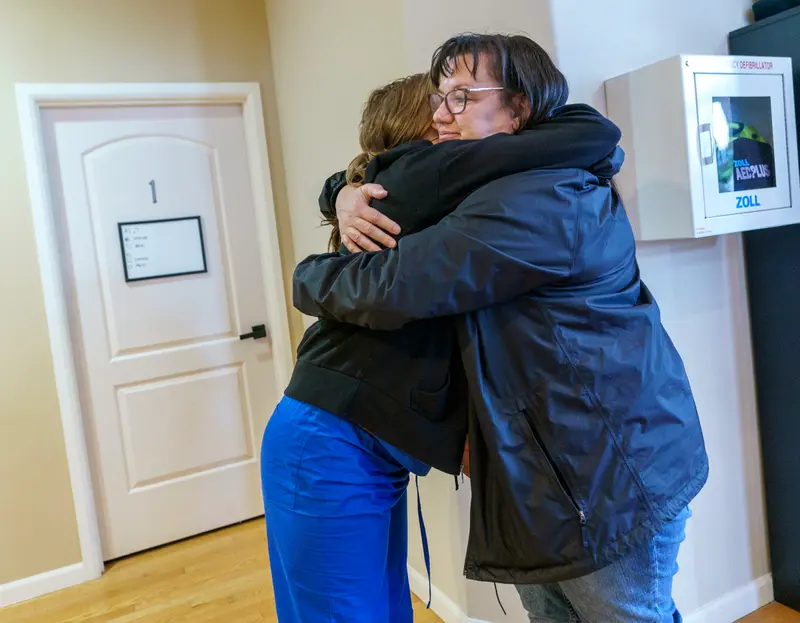
The measure earmarked hundreds of millions of dollars for treatment and replaced criminal penalties with $100 fines, which would be voided if the recipient underwent an assessment of their rehab needs. Further details were left to the Legislature and the governor.
Hurst, whose group had campaigned for Measure 110, had ideas.
Three days before the measure took effect in February 2021, Hurst emailed the office of then-Gov. Kate Brown, a Democrat in a state where Democrats also dominate the Legislature.
Hurst’s email contained a “blueprint” for Measure 110 implementation, capturing what her coalition of service providers believed the governor’s staff had agreed to in previous conversations.
The blueprint called for the state agency in charge of training and certifying police to issue a bulletin to all departments laying out how Measure 110 would affect the way officers work.
It called for the state judicial department to print up a specialized new ticket for drug possession, replacing Oregon’s generic “uniform citation” that is used for speeding and other traffic offenses. This one would prominently feature a treatment hotline number and say the fine could be waived after a screening to determine the person’s needs for social or medical services.
And the blueprint said hotline operators should be responsible for notifying the court when a person completed a screening for treatment.
None of those items in the blueprint came to pass. Police hit the streets with the old traffic citation that said nothing about treatment making the ticket disappear.
Hurst kept trying. She said she had weekly meetings with Brown’s staff in which she urged the governor’s advisers to convene law enforcement, state agencies and treatment providers to figure out how to make the $100 citations work. She recalled raising the issue at least five times, to no avail.
If a collaborative group couldn’t be convened, then Hurst wanted Brown’s office at least to direct the police on the role they needed to play in implementing the law. For example, she recommended informing officers where to find detox beds, peer counseling or other services, and how to guide people to those services.
Brown’s office told The Oregonian/OregonLive in October 2021 that she was “exploring” options such as new police training.
But Oregon’s Department of Public Safety Standards and Training, which trains law enforcement, confirmed in February that it has offered police no instruction on how Measure 110 works other than to update information for new recruits on when drug possession is a violation, misdemeanor or felony.
The Oregon Health Authority, the agency that voters required to “administer and provide all necessary support to ensure the implementation of ” Measure 110, developed no programs to inform police of the expanded services available to people they ticketed.
The agency told OPB and ProPublica its role was limited to “technical and logistical support” for the citizens’ panel that decided how to spend treatment funding. The agency said that under legislation fleshing out details of the citation system after the measure passed, “there is no role for OHA to coordinate with law enforcement.”
Brown addressed the troubled Measure 110 rollout in a 30-minute interview with the news organizations last week.
The former governor said she supported the initiative but that many factors limited her administration’s options when it took effect in 2021.
Oregon was recovering from its deadliest wildfire season on record. Law enforcement was emerging from violent Portland street clashes that followed the murder of George Floyd and coping with calls for police reform that ensued. COVID-19 vaccinations were finally on their way, and her office chose to focus on supplying shots and reopening schools.
“This initiative, happening when it did, was the perfect storm," she said.
In addition, Brown said, the measure’s authors didn’t provide Oregon elected officials an adequate framework to make implementation successful.
“This was a theory that was put into practice in a state that was probably one of the least prepared to be successful,” Brown said, noting that before Measure 110 passed Oregon was rated among the worst states for treatment access.
Brown recalled — and Hurst did not dispute — that Measure 110 supporters asked her not to be involved in selecting a citizens’ panel that would decide how new treatment funding should be spent. But she also confirmed her staff met weekly with the measure’s proponents to discuss other aspects of the rollout.
Asked about the specific steps advocates said they urged her to take on the citation system and whether these would have helped, Brown said, “I can’t speak to that.”

In January 2023, the month Brown left office, the Oregon Secretary of State released an audit critical of the Measure 110 rollout. It said the citizens’ panel overseeing new treatment funding had been far too slow in delivering the money and the health authority had not provided the panel with adequate support.
The audit also flagged inconsistencies in how law enforcement issued tickets and a lack of communication with treatment providers. It said “steps to unify the statewide process for issuing class E citations and promoting the hotline should also be taken.”
Gov. Tina Kotek, the Democrat who took over from Brown, defended Measure 110 forcefully during her 2022 campaign and vowed to fix problems with how the measure was implemented.
The health authority under Kotek managed to speed up funding to treatment providers as promised, according to a December 2023 audit by the Secretary of State.
But the same audit found that the problems with the citation and hotline system persisted.
Hurst, of the Health Justice Recovery Alliance, said she gave Kotek the same recommendations as her predecessor. A spokesperson for Kotek, Elisabeth Shepard, declined to address why these steps weren’t followed. Instead, she pointed to expanded funding and oversight for treatment.
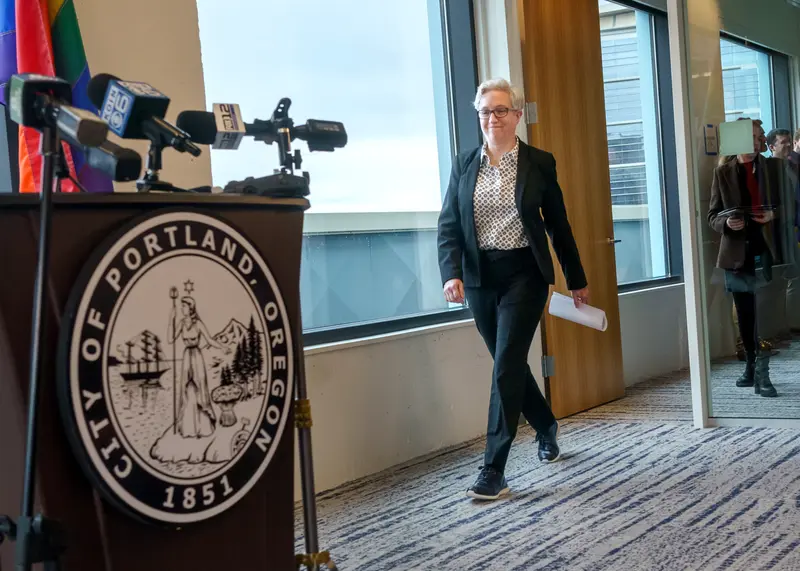
Unlike Brown, the new governor did propose new funding to train police about Measure 110. The online course was tucked into Kotek’s first budget at a cost of $50,000.
Lawmakers declined to fund it. They believed any new money should go toward treatment instead, a spokesperson for the Senate Democratic leadership office said recently.
It wasn’t the only time the Legislature rebuffed some of the same ideas passed over by Oregon’s governors for making decriminalization work.
According to a summary of comments from a series of 2021 meetings on how to implement the measure, a working group of leading lawmakers, law enforcement, health officials and Measure 110 advocates at least briefly discussed additional training for law enforcement.
“Yes to training,” the summary quotes a member from the state Department of Justice as saying. A department spokesperson said the member was Kimberly McCullough, the agency’s legislative director.
“Training is important for officers to have trust in the system,” McCullough said, according to the summary. “I think the more they learn about the purpose of the law and the importance of their role in getting people to an assessment, the better.”
But the group working on the bill to implement Measure 110 ultimately decided against a training proposal, the summary document shows, partly because of cost and partly because members believed law enforcement agencies were already planning their own Measure 110 training.
The next year, 2022, a Senate committee overseeing Measure 110 implementation heard testimony from addiction and drug policy experts at Stanford and Oregon Health & Science universities that the state’s ticketing system was failing to get people into treatment and needed an overhaul. But the committee didn’t take action in response.
Hurst said members of the same committee in 2023 briefly considered granting advocates’ requests to gather service providers and police to develop a better citation system, but that it didn’t happen.
Legislation passed that year mainly focused on speeding up the rollout of treatment services. It also authorized promotional campaigns to raise the visibility of the hotline number, but it did not mandate that police use citations with the phone number printed on them.
To this day, the Oregon Judicial Department — the state’s third branch of government that includes the courts — has not created a specialized Measure 110 ticket. Phil Lemman, deputy state court administrator, said by email that a ticket targeting only Measure 110 violators would require legislative authorization. Lemman said even a change like adding the drug hotline number to the state’s existing traffic citation is a lengthy process requiring state Supreme Court approval. Court officials were also concerned the hotline number might change, he wrote.
The 2023 bill intended to smooth out the implementation of Measure 110 called for state auditors to assess the kind of training law enforcement was getting. It did not offer money for training.
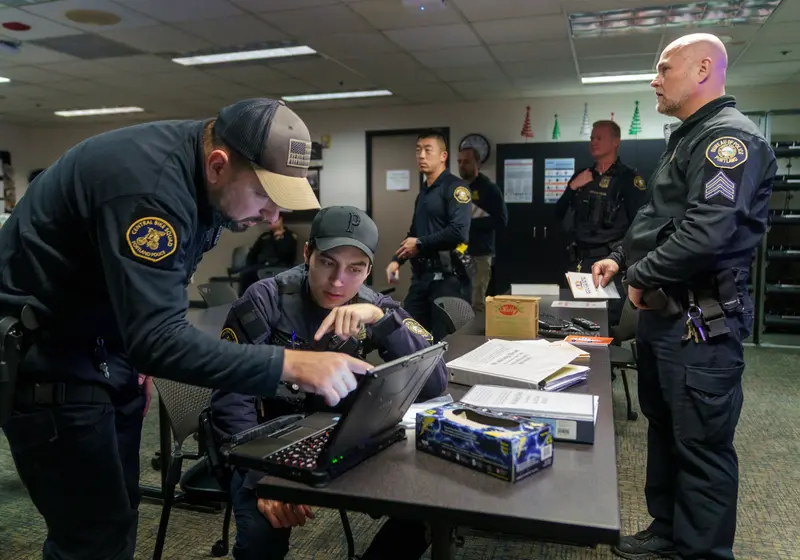
Lawmakers had delivered one change to the ticketing system that advocates sought. A bill passed in 2021 eliminated any penalty for failure to either obtain treatment or pay the $100 fine.
The combined result of all the legislative efforts on Measure 110 was to leave Oregon with no carrot and no stick to steer people into treatment.
“Hindsight always gives you a better view of what has come before you,” said Sen. Floyd Prozanski, the Senate judiciary chair who led the legislative effort to implement Measure 110, when asked why he and other lawmakers didn’t take further action.
He said lawmakers should have taken more time to set up both outreach and proper incentives for treatment at the outset.
Oregon could have avoided the problems that ensued, he said, if he and others had acknowledged “We’re not ready for opening up this concept without building the infrastructure that’s needed.”
In the absence of a ticketing system that made sense, the outcome was predictable.
In the first 15 months after Measure 110 took effect, state auditors found, only 119 people called the state’s 24-hour hotline. That meant the cost of operating the hotline amounted to roughly $7,000 per call. The total number of callers as of early December of last year had only amounted to 943.
Part of the bottleneck was that police were not eager to issue citations for drug possession.
“Why would I do that?” one officer told researchers from Portland State University in 2021.
Another criticized the $100 fine as being low. “Lower than somebody failing to use a turn signal,” the officer was quoted as saying.
Police gave out only about 2,500 citations a year, compared with the roughly 9,500 arrests they made annually in years before Measure 110.
The problem, Marshall believes, is that nobody told the police why they remained relevant to addressing drug use after Measure 110 passed.
“We never trained the cops on ‘Look, this is the value of we're going to go from prosecuting people who use drugs to intervening on people who use drugs,’” Marshall said. “‘This ticket system is a process for that. And so let’s get as many tickets out there as possible, and then let’s use that ticket and that interaction to connect people to the services they need.’”
Treatment providers wanted to ensure that when officers issued the occasional citation, they at least had some way to tell recipients about treatment — even if the information wasn’t on the ticket. Lines For Life, the hotline operator, printed its phone number on thousands of wallet cards for the police.
It didn’t go smoothly.
When officials at the Portland Police Bureau placed an order with Lines For Life for 5,000 wallet cards, the organization told them the cards had been sent five months before.
The police bureau later found them sitting unused.
The Oregon Health Authority has touted a continuous and substantial increase in people accessing treatment for substance abuse disorder in each quarter from 2022 to 2023. Other state and federal treatment statistics from before and after Measure 110 passed seem to show a less consistent rise over a longer period of time, and a health authority spokesperson did not address how to interpret the other data when asked.
But regardless of the bigger picture on treatment, critics began to cite hotline phones that seldom rang and ignored citations as evidence that decriminalization had failed.
By late last year, the backlash gained momentum. Wealthy business owners put $700,000 behind a new ballot initiative to make drug possession the highest level of misdemeanor, punishable with up to a year in jail.
With polls showing public sentiment turning against Measure 110, the governor and lawmakers who’d previously opposed recriminalization warmed to the idea. They developed legislation with a variety of sweeteners for attending treatment while restoring the threat of jail time as further incentive. Kotek has signaled she would sign a bill reinstating criminal penalties.
“People need to be able to walk down the street and make sure people aren't using drugs in front of them,” Senate Majority Leader Kate Lieber told OPB in January.
“There has been a change in the mood of the electorate,” Lieber said. “They realize that things are not working.”
Measure 110 supporters point to research that says data does not support the idea that recriminalizing drugs would have an effect on Oregon’s rise in fentanyl overdoses. Deaths have been on the same high trajectory as in neighboring states before and after Measure 110 took effect. Many people suggest that Oregon could create other consequences for skipping out on treatment, short of jail.
Or Oregon leaders could implement Measure 110 the way backers say they’ve always wanted.
It might look like the pilot program between police and health workers that was on display in December on a downtown Portland sidewalk. Cioeta, the Portland sergeant who’s been frustrated by how few people have called for help after getting a ticket, was a big part of the effort.
“If we have one person that actually goes into treatment today, that’s one more than the 700 that we’ve had not going to treatment at all,” he said as he set out in a police cruiser to support Portland’s bicycle patrol on the project’s firstday.
The patrol soon encountered a man who gave his name as Joseph, who lay curled in a sleeping bag, sick from fentanyl withdrawal. (The man asked OPB and ProPublica not to publish his full name to protect his medical privacy.)
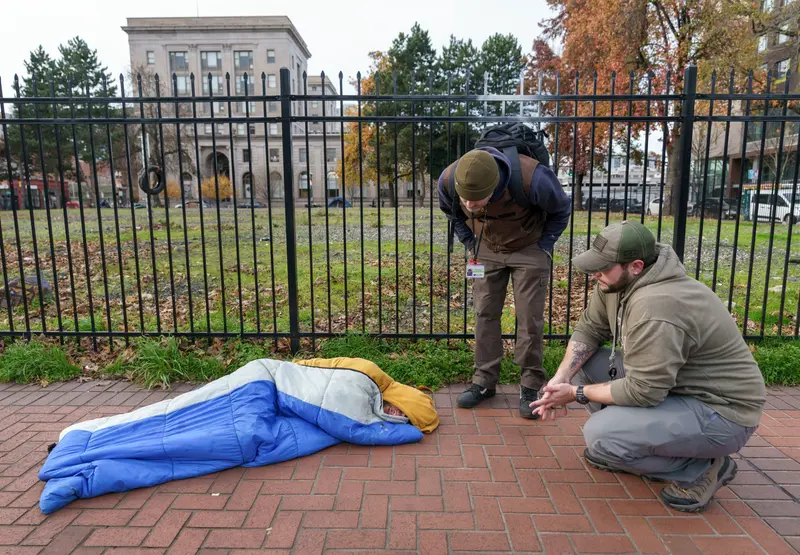
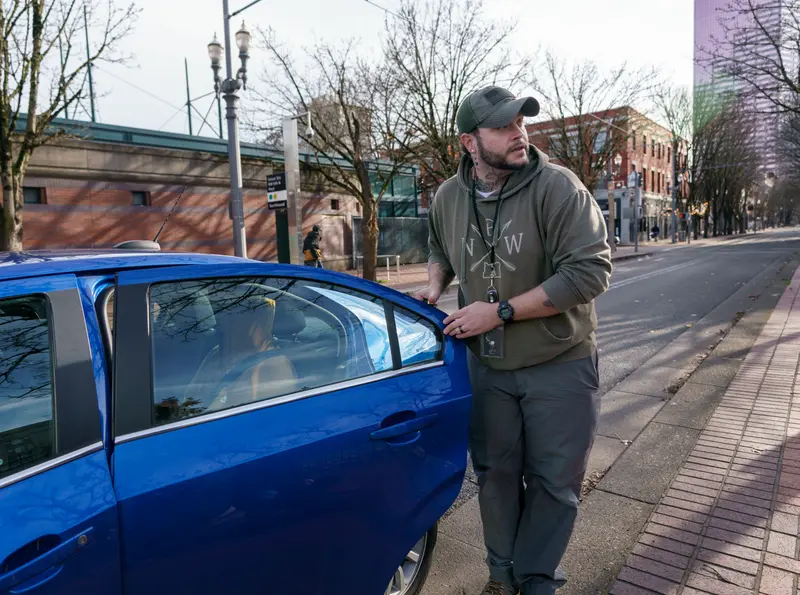
An officer asked if he was interested in treatment, and Joseph said yes. The officer called a nearby outreach worker from the nonprofit Mental Health and Addiction Association of Oregon, who arrived and sat down on the sidewalk.
“How’s it going, Joseph? My name’s Ryan.”
“I feel terrible, and I’m really cold,” Joseph told him.
The outreach worker placed a call while the police officer stood by watching.
“Ryan, we’ll be right here if you need something,” the officer told the outreach worker.
Within an hour, Joseph buckled himself into a blue sedan that would drive him to detox.
He completed it and, about a month later, was continuing his recovery in an intensive outpatient program in Portland.
If you have information to share about how police, treatment providers and others are approaching Oregon’s drug crisis, please contact OPB reporter and ProPublica distinguished fellow Tony Schick at aschick@opb.org or 503-977-7784. We take your privacy seriously and will contact you if we wish to publish any part of your story.
Update, Feb. 16, 2024: This story has been updated to include additional comment from Phil Lemman, Oregon’s deputy state court administrator.
